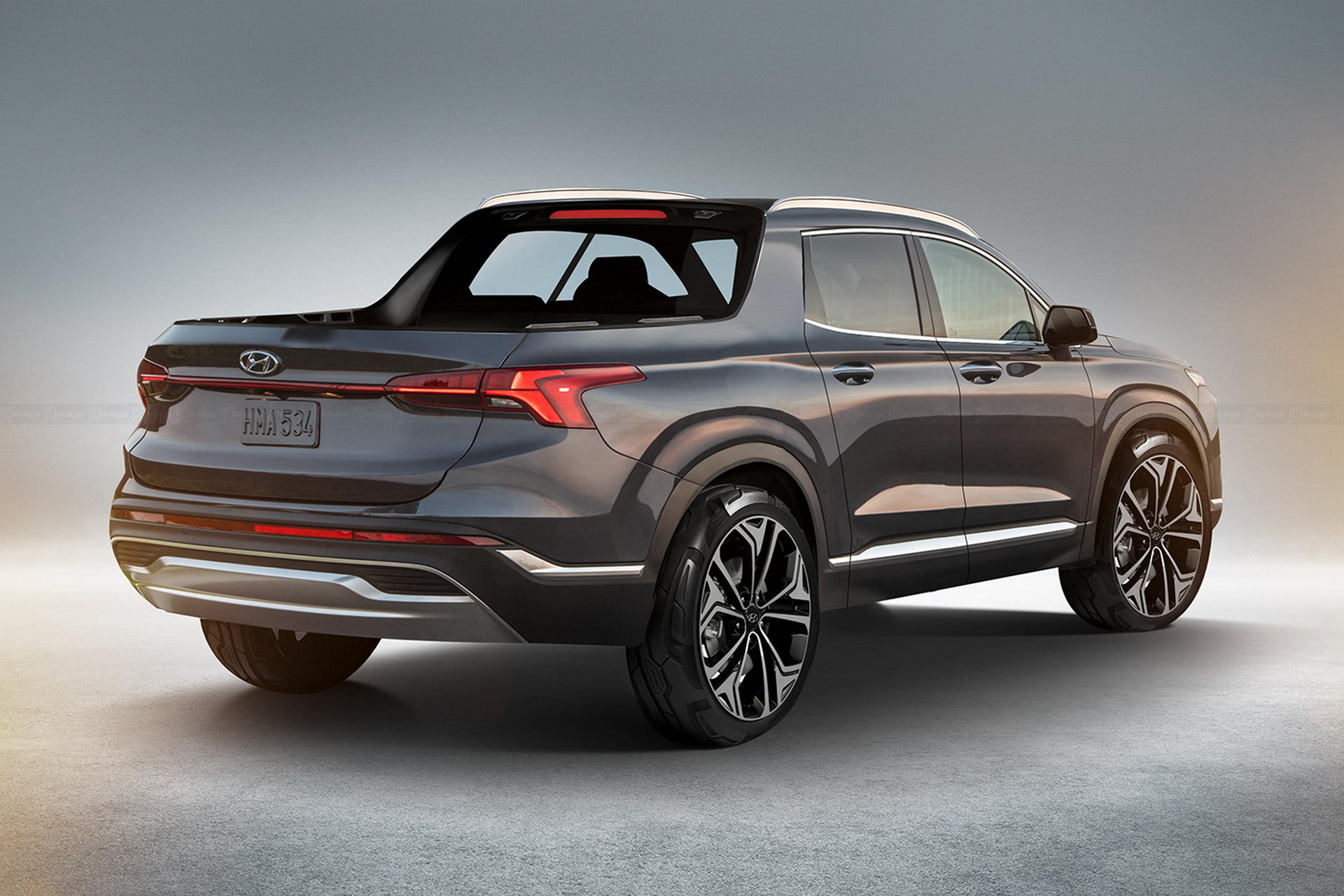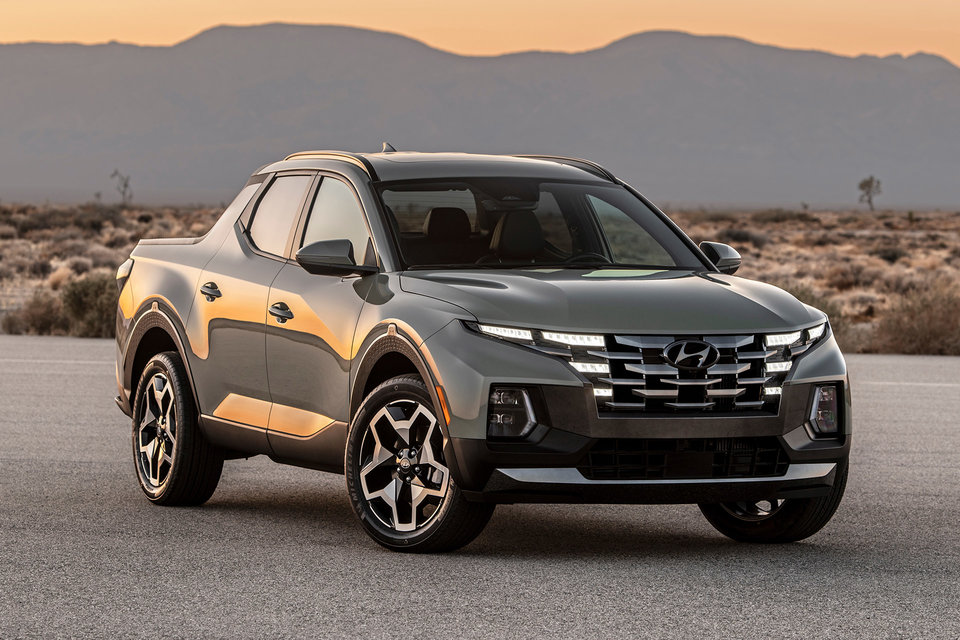

In most situations, it doesn’t feel like a truck at all. If not for the manually sliding rear window, however, it would be easy to forget there’s a bed in back. Laminated acoustic glass helps keep the cabin quiet, but there’s no silencing the road noise at speed from the 20-inch alloy wheels standard on the Limited. When cruising on the highway, torque goes to the front wheels for efficiency and the MacPherson front struts and multilink rear suspension soak up the road like a good crossover. Hyundai’s adventure vehicle expertly balances road handling and ride quality. In Smart mode, the system predicts predictability, so unpredictable driving behavior can cause the transmission to hesitate. The Santa Cruz weighs about the same as the Santa Fe at 4,100 lb, but its smaller cabin proportions and taller ride height make it feel livelier. A bit of excusable turbo lag gives way to max torque coming on at 1,700 rpm, and in Sport mode the 8-speed stays in the rev range for plentiful power when called upon, or the transmission can be overridden with paddle shifters.

Acceleration feels quick enough to estimate a mid-six second time from 0-60 mph in my top Limited trim. The combination works well in the Santa Cruz. The part sharing doesn’t stop there: the torque-rich turbo-4 pairs to an 8-speed dual-clutch automatic transmission used in Hyundai’s N performance vehicles at launch the turbo-4 only comes with Hyundai’s all-wheel-drive system with a center locking differential used throughout the brand’s crossover lineup. Even though the Santa Cruz shares a platform with the Tucson, that turbo-4 shares a bay with the larger, heavier Santa Fe.
#SANTA CRUZ TRUCK DRIVERS#
Hyundai kept us from the base 191-hp 2.5-liter inline-4 and instead shuffled drivers into an uprated 2.5-liter turbo-4 that generates 281 hp and 311 lb-ft of torque.


 0 kommentar(er)
0 kommentar(er)
